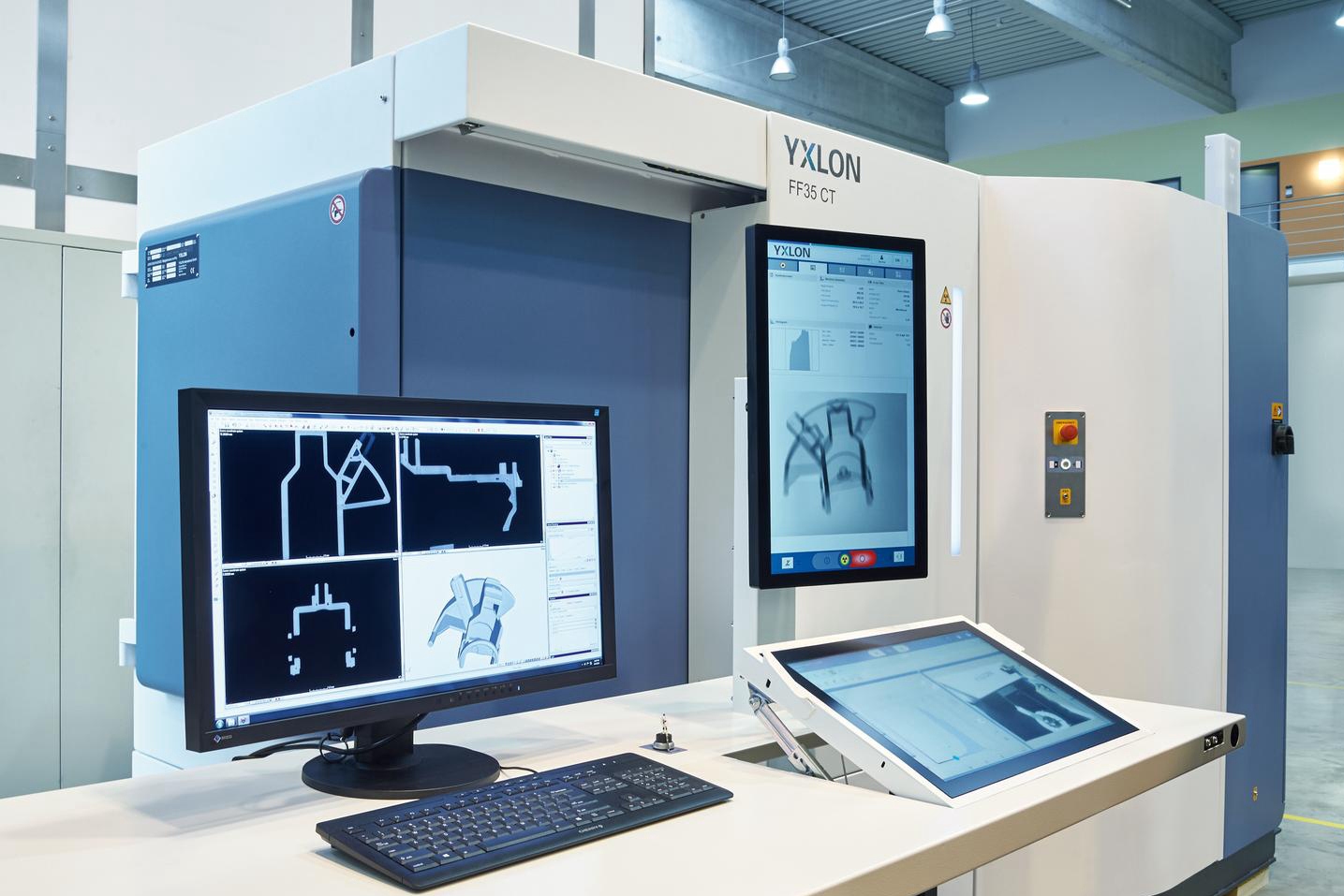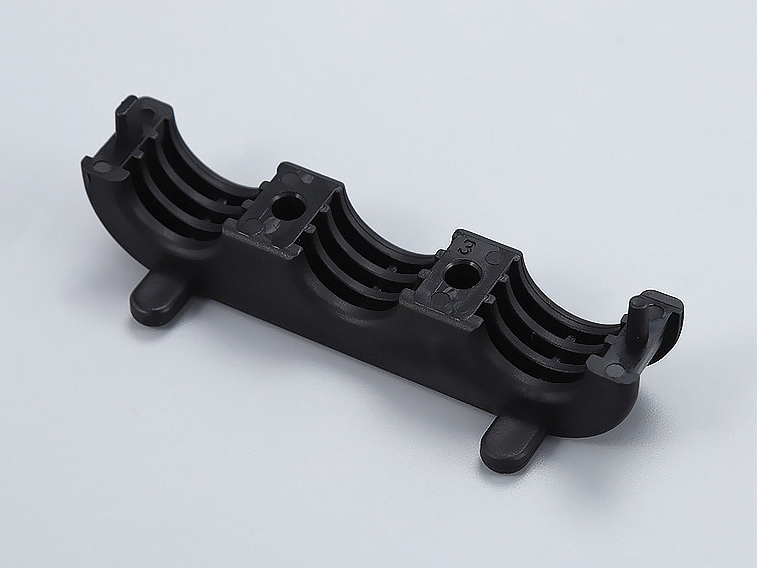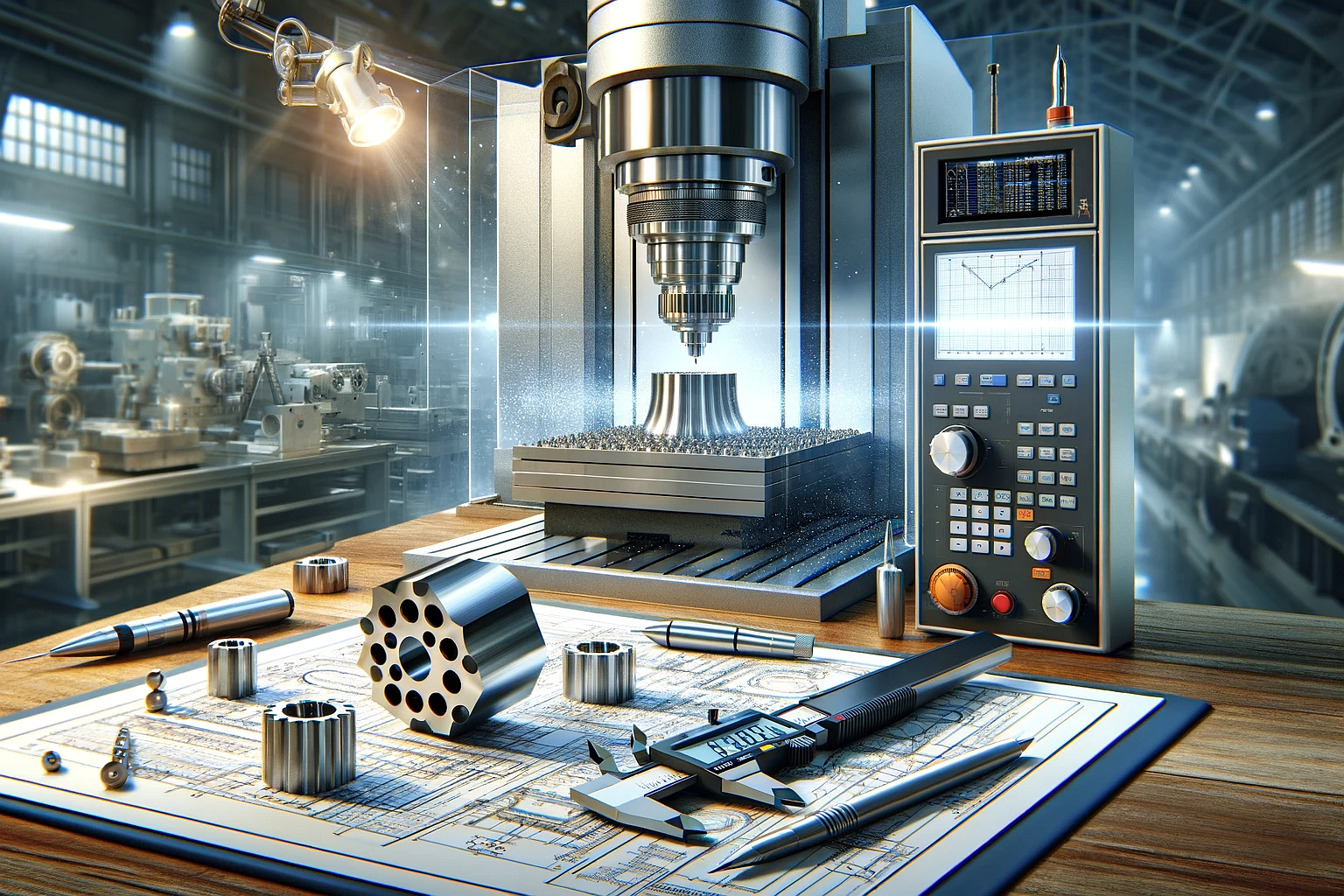3D Scanning Measuring Instrument Custom Parts Quality
Introduction
In today’s advanced custom parts manufacturing, the demand for ultra-precise dimensional accuracy has never been higher. Industries such as aerospace, medical devices, precision electronics, and high-performance automotive components require complex geometries with tolerances down to the micron level. At the same time, modern production models increasingly emphasize first-pass yield, reduced time-to-market, and digital traceability across the product lifecycle.
Achieving this level of dimensional control necessitates advanced non-contact metrology solutions. Among these, 3D scanning measuring instruments have become a core technology, providing high-resolution digital representations of component surfaces in a fraction of the time required by traditional methods. By generating dense point cloud data and enabling full-surface analysis, 3D scanning enhances both process capability and quality assurance in high-mix, high-complexity manufacturing.
When integrated into a modern custom parts manufacturing service, 3D scanning supports rapid design validation, inline quality control, and digital twin implementation—key enablers of Industry 4.0. This article explores the fundamentals, core advantages, practical application scenarios, and comparative positioning of 3D scanning metrology in ensuring the quality of 3D scanning measuring instrument custom parts, providing engineering managers and quality professionals with actionable insights for optimizing their inspection processes.
Fundamentals of 3D Scanning Metrology
Working Principles of Modern 3D Scanners
3D scanning metrology is based on the capture of a component’s surface geometry through non-contact optical methods. Modern 3D scanners employ one of several core technologies:
Structured light scanning projects a known light pattern onto the part surface and calculates 3D coordinates based on image distortions.
Laser triangulation scanning uses a laser line or point in conjunction with a camera to measure surface geometry.
Computed tomography (CT) scanning captures both external and internal geometries using X-ray projection and reconstruction algorithms.
These technologies generate dense point cloud data, often exceeding 1 million points per second, with typical lateral resolutions of 5–20 microns. The data is then processed into formats such as point cloud (XYZ), STL meshes, or parametric NURBS surfaces, facilitating direct comparison to CAD models and tolerance analysis.
The choice of scanner depends on the application requirements: structured light scanners offer high speed for external surfaces, laser scanners balance precision and flexibility, while CT scanners are ideal for internal feature inspection and assembly analysis.
Metrology Standards and Calibration Protocols
To ensure traceable and reliable results, 3D scanning systems must comply with recognized international standards. The two most widely referenced are:
ISO 10360-8: Specifies acceptance tests and reverification tests for optical coordinate measuring systems (CMS) with area scanners. It defines metrics such as probing error, length measurement error, and volumetric performance.
VDI/VDE 2634: A German standard covering optical 3D measuring systems, including guidelines for calibration artifacts and uncertainty assessment.
For high-end systems, typical measurement uncertainty ranges from ±5 µm to ±15 µm depending on scanner class, measurement volume, and surface characteristics. To maintain accuracy, periodic calibration against certified gauge artifacts is essential, with traceability to national standards (such as NIST or PTB).
In high-precision environments, scanner calibration is often performed at the start of each inspection shift, and automated verification routines are embedded in quality control workflows. Additionally, modern scanners integrate temperature compensation and real-time environmental monitoring to stabilize measurement performance under variable shop floor conditions.
Core Advantages in High-Precision Quality Assurance
High-Density Data Capture for Complex Surfaces
Modern manufacturing increasingly involves components with complex freeform surfaces, organic geometries, and intricate design features that cannot be adequately verified using point-based tactile metrology alone.
3D scanning systems excel in these applications by providing comprehensive full-surface data capture. High-end scanners can generate point clouds with densities exceeding 1 million points per second, with lateral resolution down to 5 µm. This enables accurate measurement of surface waviness, contour integrity, and critical features across complex topologies, such as turbine blades, biomedical implants, and precision-molded optics.
Moreover, 3D scanning supports advanced dimensional analysis techniques, including geometric dimensioning and tolerancing (GD&T) evaluation, best-fit alignment, and surface deviation mapping, all of which are essential for ensuring compliance with aerospace, automotive, and medical device standards.
Non-Contact Precision for Delicate and Thin-Wall Components
Many modern components, such as thin-walled aluminum housings, flexible polymers, or composite laminates, cannot tolerate the mechanical contact forces applied by traditional coordinate measuring machines (CMMs).
Non-contact 3D scanning eliminates this concern entirely, allowing precise dimensional verification without physical interaction with the part. This is especially critical for:
Ultra-thin components (wall thickness < 0.5 mm)
Soft elastomers and silicone parts
Brittle ceramic or glass materials
Assembled products with fragile or bonded interfaces
In these scenarios, non-contact scanning not only ensures dimensional accuracy but also preserves part integrity and enables 100% inspection of parts that would otherwise be at risk of deformation during measurement.
Process Efficiency and Digital Twin Integration
3D scanning dramatically improves inspection throughput and process efficiency. Compared to tactile CMM probing, which may take 20–30 minutes for complex components, optical scanning can acquire full-surface data in under 5 minutes, reducing inspection cycle time by up to 50–80%.
This accelerated data acquisition is invaluable for high-mix, low-volume custom manufacturing, where flexibility and rapid feedback are critical. Furthermore, modern 3D scanning workflows seamlessly integrate with digital twin and model-based definition (MBD) environments. By mapping scan data to the nominal CAD model, engineers can perform real-time deviation analysis and close the loop between design intent and as-built product.
In continuous improvement methodologies such as the PDCA control system, 3D scanning provides the data foundation for Statistical Process Control (SPC), root cause analysis, and predictive quality management. This enables manufacturers to optimize their processes and achieve higher first-pass yield rates.
Application Scenarios in Custom Parts Manufacturing
CNC Machined Parts
In high-precision CNC machining, especially for aerospace and medical applications, components often feature freeform surfaces, multi-axis geometries, and tight-tolerance cavities. These geometries pose significant challenges for traditional tactile inspection, which is limited to discrete point sampling.
3D scanning systems enable full-surface verification of complex machined parts such as turbine blades, impellers, orthopedic implants, and injection mold inserts. By capturing millions of data points, they provide comprehensive surface analysis, allowing engineers to detect subtle deviations, tool wear patterns, and process drift early in production.
Adoption of 3D scanning enhances the quality assurance process in high-precision CNC machining, helping manufacturers meet stringent industry standards like AS9100 and ISO 13485.
Complex Sheet Metal Assemblies
Sheet metal fabrication processes such as deep drawing, stamping, bending, and welding often result in components with complex profiles and cumulative geometric distortions. These assemblies require full-profile verification to ensure conformance to design specifications.
3D scanning provides a non-contact method to inspect large and flexible sheet metal parts, including automotive body panels, aerospace enclosures, and industrial equipment housings. It allows rapid measurement of formed features, edge straightness, hole positions, and weld bead geometry.
Moreover, reverse engineering capabilities enable the generation of accurate CAD models from existing physical parts, supporting legacy component documentation and tool requalification in advanced sheet metal fabrication environments.
Injection Molded Plastics
Injection molding processes inherently involve complex shrinkage behaviors and warpage due to cooling dynamics. Traditional inspection methods struggle to capture these volumetric distortions comprehensively.
3D scanning systems address this challenge by enabling full-volume dimensional analysis of molded parts, including freeform surfaces, undercuts, and internal features (when combined with CT scanning). Applications include:
Consumer electronics housings
Medical device casings
Optical components and light guides
By comparing scanned data to nominal CAD geometry, engineers can refine mold design, optimize process parameters, and validate shrinkage compensation strategies, ultimately improving the quality of plastic injection molding.
Precision Die Cast Parts
Die casting produces high-strength components with complex surface features and thin-wall sections, such as structural housings for aerospace, automotive, and electronics applications. However, variations in mold temperature, material flow, and cooling rates can introduce subtle dimensional deviations.
3D scanning enables rapid, non-contact validation of precision die cast parts. It facilitates full-surface analysis of critical features such as:
Thin ribs and webs
Flatness of mating surfaces
Boss positions and diameters
External contours and cosmetic surfaces
Integration of 3D scanning into aluminum die casting quality workflows reduces the risk of dimensional non-conformance and accelerates process optimization, particularly during tool commissioning and production ramp-up.
Comparative Study: 3D Scanning vs Traditional Metrology
Coordinate Measuring Machines (CMM)
Coordinate Measuring Machines remain a benchmark in dimensional metrology, especially for applications requiring high point-to-point accuracy and tight tolerances on prismatic features. Typical CMM systems achieve volumetric accuracy in the range of ±2 to ±5 µm for standard measurement volumes.
However, CMMs are inherently limited by their tactile nature:
Measurement points are sparse and operator-defined.
Complex freeform surfaces require extensive programming.
Inspection times for complex parts can be prohibitive.
Contact probing risks damaging soft or delicate components.
By contrast, 3D scanning provides dense, full-surface data without physical contact, enabling rapid inspection of complex geometries such as turbine blades, organic consumer product designs, and medical implants. For many modern applications, 3D scanning and CMM are used complementarily—CMM for tight-tolerance datum features, and 3D scanning for comprehensive surface validation.
Optical Comparators
Optical comparators offer an effective solution for 2D profile inspection, particularly in high-volume production of stamped, turned, or small machined parts. They project a magnified silhouette of the part against a reference overlay, enabling fast visual verification of edge profiles.
However, optical comparators are fundamentally limited to two-dimensional analysis. They cannot capture full 3D geometries, out-of-plane features, or surface textures—capabilities that are essential for modern precision components.
In contrast, 3D scanning systems deliver complete three-dimensional measurement data, supporting advanced GD&T analysis, surface deviation mapping, and form error quantification across the entire part geometry.
Vision Systems
Automated vision systems are widely used for high-speed inspection of features such as hole presence, thread quality, and basic dimensions in mass production environments. They excel in applications requiring fast, repeatable pass/fail decisions on simple geometries.
However, vision systems lack the volumetric accuracy and flexibility of 3D scanning:
They operate in two or two-and-a-half dimensions (2.5D).
They are limited by camera resolution and lighting constraints.
They are less adaptable to complex or variable part geometries.
3D scanning offers superior flexibility for high-mix, low-volume manufacturing scenarios, where parts may feature complex shapes, varied materials, and challenging surface finishes.
Role in Prototyping and Agile Manufacturing
Prototyping and iterative product development demand rapid, accurate feedback on manufactured parts. In these environments, 3D scanning plays a pivotal role by providing fast, high-fidelity dimensional verification during prototyping.
Key benefits include:
Accelerated design validation through CAD comparison
Early detection of manufacturing issues
Reduced prototype iteration cycles
Enhanced collaboration between design, engineering, and production teams
By integrating 3D scanning into agile manufacturing workflows, companies can improve first-pass yield, shorten time-to-market, and ensure that prototype and production parts meet stringent quality requirements.
Case Study: Aerospace Electronics Enclosures Quality Assurance
Background
A global aerospace electronics manufacturer required a robust quality assurance process for precision sheet metal enclosures used in avionics systems. These enclosures featured complex formed geometries, multi-step assembly operations, and critical mating surfaces with tolerance requirements of ±0.01 mm on profile deviations.
Traditional inspection approaches, relying on tactile probing and 2D profile projection, proved inadequate due to the following challenges:
Complex 3D contours not accessible by contact probes
Cumulative distortions from forming and welding processes
The need for full-surface verification to ensure electromagnetic compatibility (EMC) shielding integrity
3D Scanning Inspection Workflow
The manufacturer implemented a state-of-the-art 3D scanning metrology solution as part of their advanced quality assurance system.
Key elements of the workflow included:
Custom fixture design: Precision fixturing ensured consistent part orientation and stability during scanning.
Reference system alignment: Best-fit alignment algorithms established an accurate correlation between scanned data and the nominal CAD model.
Full-surface comparison: Deviation mapping identified profile variations, flatness issues, and out-of-tolerance features across the entire part geometry.
Automated reporting: Integrated software generated Statistical Process Control (SPC) reports and First Article Inspection (FAI) documentation in accordance with aerospace quality standards (AS9102).
This approach enabled 100% inspection of complex enclosures, providing comprehensive data for both process control and customer compliance audits.
Quality and Business Outcomes
Adoption of 3D scanning metrology delivered significant quality and operational benefits:
Non-conformance rates were reduced by 40%, driven by earlier detection and correction of forming and welding variations.
FAI approval times decreased by 25%, accelerating time-to-market for new product introductions.
Enhanced digital traceability improved audit performance and customer confidence, supporting expanded contracts with major aerospace OEMs.
The solution integrated seamlessly with the company's broader precision aerospace sheet metal and enclosure fabrication processes, enabling closed-loop quality management across design, production, and inspection stages.
Conclusion
3D scanning metrology has evolved into a critical technology for modern custom parts manufacturing, providing unparalleled capability for full-surface dimensional verification, process optimization, and digital traceability.
By capturing high-density measurement data in a non-contact, rapid manner, 3D scanning addresses the complex geometries and stringent tolerance requirements of today’s precision components across industries such as aerospace, automotive, medical devices, and advanced electronics.
Beyond quality assurance, 3D scanning plays a strategic role in driving digital transformation through digital twin integration, model-based definition workflows, and predictive quality management. When combined with continuous improvement methodologies like PDCA, it empowers manufacturers to achieve higher first-pass yields, reduced rework rates, and shorter development cycles.
Looking ahead, emerging trends such as inline 3D metrology, automated inspection robotics, and artificial intelligence-based defect prediction will further expand the value of 3D scanning in high-mix, high-complexity production environments. For engineering managers, quality professionals, and manufacturing leaders, adopting advanced 3D scanning solutions represents a key enabler for maintaining competitive advantage in an increasingly demanding global market.



